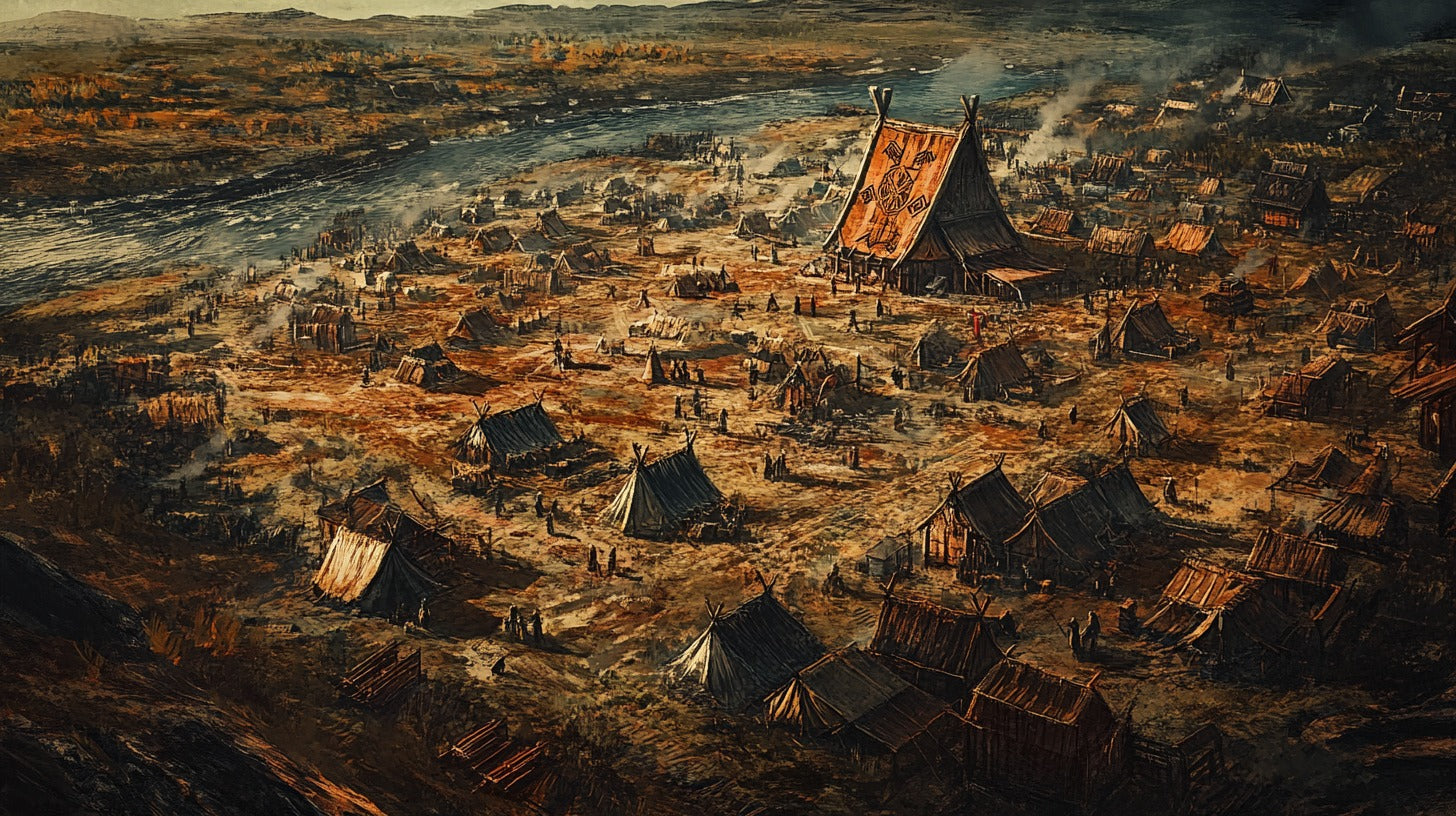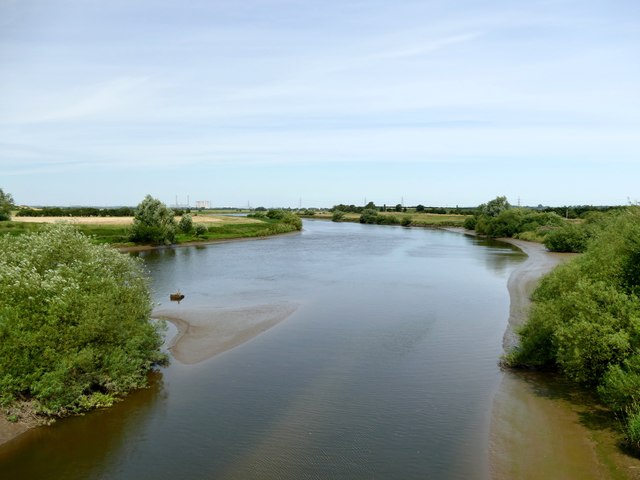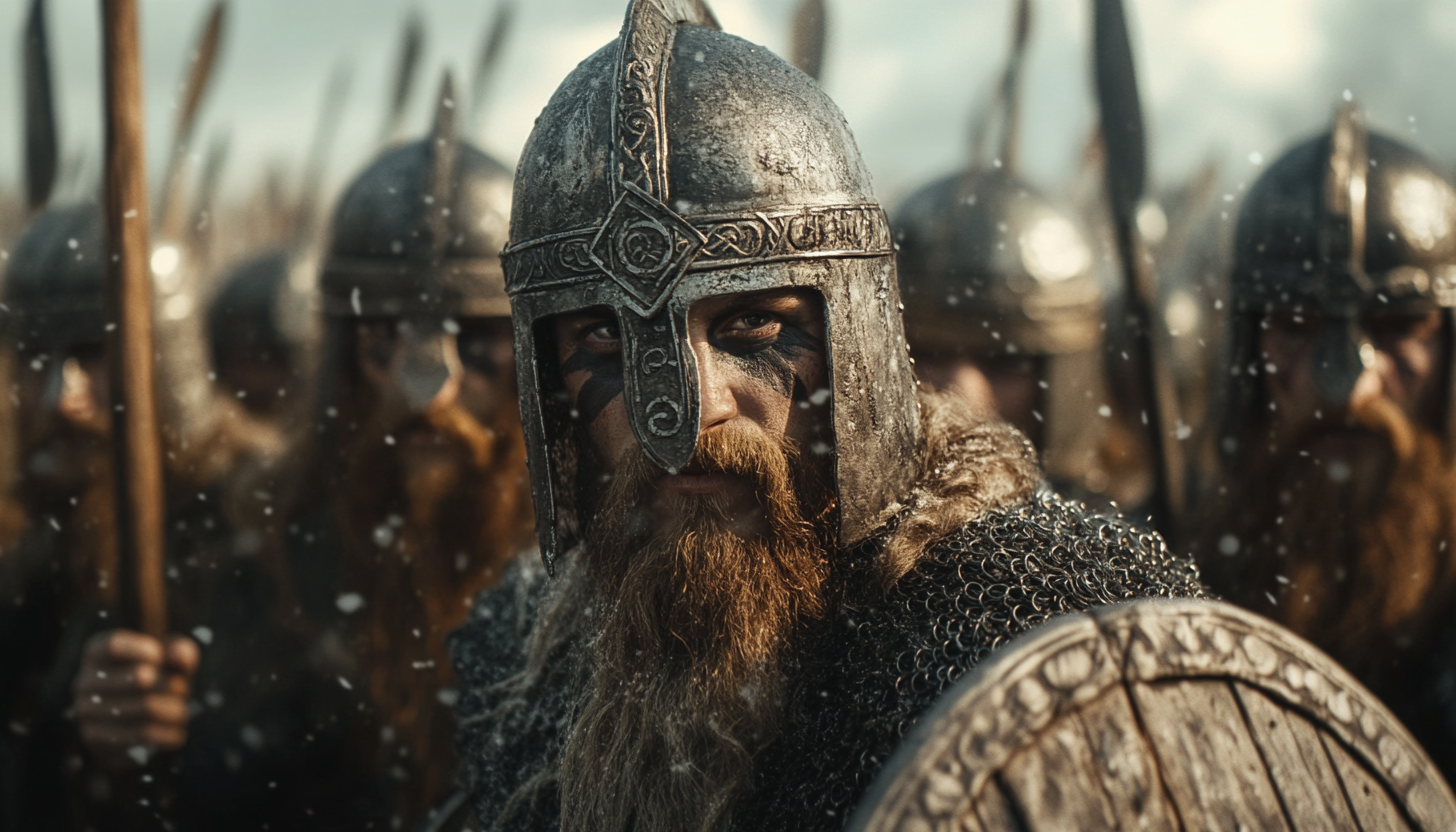
Unearthing Viking Torksey: A Window into 9th Century England
The small town of Torksey, situated on the banks of the River Trent in Lincolnshire, England, played a significant role during the Viking Age. This article explores the historical context, archaeological evidence, and lasting impact of the Viking presence in Torksey, particularly focusing on the winter of 872-873 CE when the Great Viking Army established a camp in the area.
Historical Context
The Viking Age in England began in the late 8th century with sporadic raids and escalated in the mid-9th century with large-scale invasions. The arrival of the Great Heathen Army in 865 CE marked a turning point in Viking activity in England, as they sought not just to raid but to conquer and settle.

Torksey Castle (Photo: Gainsboroughjames)
Torksey's position on the River Trent made it an ideal location for Viking operations. The river provided easy access to the heart of England and a quick escape route to the North Sea. The surrounding flat landscape offered ample space for a large army to camp and prepare for further campaigns.
The Great Viking Army at Torksey
In the autumn of 872 CE, the Great Viking Army arrived at Torksey. The Anglo-Saxon Chronicle records that the army "took up winter quarters at Torksey, in Lindsey; and then the Mercians made peace with the army." This brief entry belies the significant impact this event would have on both the local area and the course of English history.
Archaeological Evidence
Recent archaeological investigations have shed new light on the Viking presence at Torksey. Excavations conducted by the Universities of Sheffield and York have revealed a wealth of artifacts and evidence of a large encampment. Metal detectorists have also contributed significantly to our understanding of the site, with thousands of finds recorded through the Portable Antiquities Scheme.
Size and Composition of the Army
Based on the extent of the camp and the density of finds, archaeologists estimate that the Viking army at Torksey numbered in the thousands, possibly between 5,000 and 10,000 individuals. This figure includes not only warriors but also craftspeople, traders, and camp followers. The diverse array of artifacts found at the site suggests a mixed group, including Scandinavians, Franks, and Anglo-Saxons.
Life in the Viking Winter Camp
The archaeological evidence provides insights into daily life in the Viking camp. Finds include gaming pieces, suggesting leisure activities, as well as tools for metalworking, woodworking, and textile production. These artifacts indicate that the camp was not merely a military base but a bustling community engaged in various activities.

The River Trent from Torksey (Photo: Graham Hogg, Geograph Britian & Ireland)
Trade and Craftsmanship
The camp at Torksey appears to have been a hub of economic activity. Numerous coins, both Anglo-Saxon and foreign, have been found, along with weights and balances used in trade. Evidence of metalworking, including ingot molds and crucibles, suggests that the Vikings were actively processing and recycling precious metals, likely from loot obtained during their campaigns.
Social Organization
The distribution of high-status items across the site hints at a hierarchical social structure within the camp. Luxury goods, such as fine metalwork and exotic materials, were likely associated with the army's leaders and elite warriors.
Impact on Local Anglo-Saxon Population
The relationship between the Viking army and the local Anglo-Saxon population was complex. While the Anglo-Saxon Chronicle mentions that the Mercians made peace with the army, this likely involved the payment of tribute. The large Viking presence would have put significant pressure on local resources and communities.
Economic Effects
The influx of thousands of people into Torksey would have had a profound economic impact. While some locals may have benefited from trade opportunities, others likely suffered from the strain on food supplies and the threat of violence.
Legacy of Viking Presence in Torksey
The Viking presence in Torksey left a lasting mark on the region. Place names and linguistic influences in the area bear witness to Scandinavian settlement following the initial invasion. The integration of Viking and Anglo-Saxon cultures in this region contributed to the distinct character of the Danelaw in subsequent centuries.

Archaeological Significance
The Torksey site has become one of the most important Viking Age sites in Britain. Its excellent preservation and the wealth of artifacts recovered have provided invaluable insights into Viking military organization, economic practices, and daily life during their campaigns in England.
Conclusion
The Viking winter camp at Torksey represents a crucial moment in the history of Anglo-Scandinavian relations in England. It provides a vivid snapshot of a pivotal period when Viking armies were transitioning from raiders to conquerors and settlers. The archaeological evidence from Torksey has significantly enhanced our understanding of the Viking Great Army, its composition, activities, and impact on Anglo-Saxon England. As research continues, Torksey remains a key site for unraveling the complexities of the Viking Age in Britain.
FAQs
- When did the Vikings establish their winter camp at Torksey?
The Viking Great Army established its winter camp at Torksey in the autumn of 872 CE, staying through the winter of 872-873 CE.
- How many Vikings were present at the Torksey camp?
Archaeological evidence suggests that the camp housed between 5,000 and 10,000 individuals, including warriors, craftspeople, and camp followers.
- What types of activities took place in the Viking camp at Torksey?
Activities included military planning, trading, metalworking, woodworking, textile production, and leisure activities such as gaming.
- How has archaeology contributed to our understanding of the Torksey site?
Archaeological excavations and metal detecting have revealed thousands of artifacts, providing insights into the camp's size, economy, and daily life of its inhabitants.
- What was the long-term impact of the Viking presence in Torksey?
The Viking presence led to lasting cultural and linguistic influences in the region, contributing to the distinct character of the Danelaw in subsequent centuries.
References
"The River Trent from Torksey Viaduct" by Graham Hogg is licensed under CC BY-SA 2.0.
"Torksey Castle Jan 2024 2" by Gainsboroughjames is licensed under CC BY-SA 4.0.








